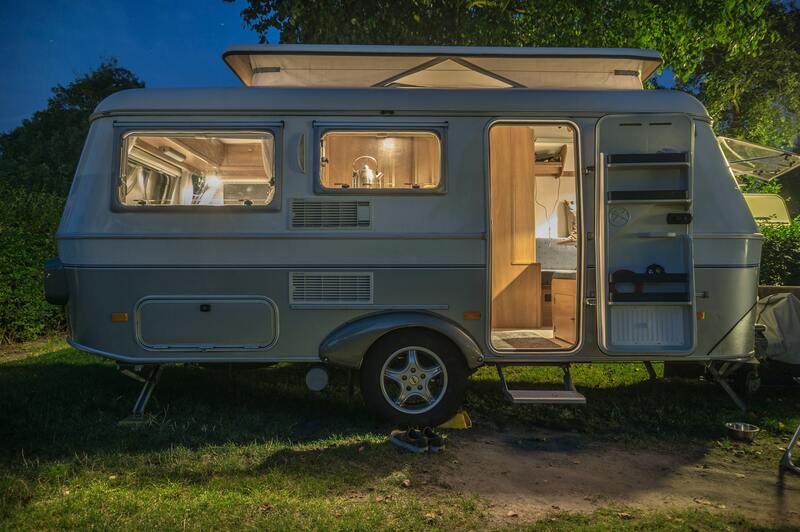The worst that could happen is that you’d have to figure out how to repair water damaged subfloor in mobile home. For others, living in a mobile home is the most cost-effective option.
Water damaged subfloors can occur in any type of home. Still, since particleboard is the most frequently used building material in the construction of subflooring, the damage can be far more severe in these mobile homes.

Let’s get started with the things you’ll need to gear up.
Materials To Have On Hand
Ready your notepad as you can use the following list as a starting point for your preparation. To assist you in organizing, tick off the items on this checklist:
- A pair of goggles or safety glasses for protection
- Utility knife
- Circular saw
- Prybar
- Tape measure
- Plywood or Oriented strand board (OSB)
- Screwdriver bits to be used for drilling
- Structural adhesive
Repairing A Water Damaged Subfloor
Step #1. Damage inspection
If the soft spot on the floor isn’t clearly visible, walk over to it to find it.
Step #2. Targeting
Trim around the soft spot through the floor covering using a utility knife. You can see the extent of damage to the subfloor by peeling back the floor covering.
Cut and peel away more of the floor covering if the damage appears to be more extensive.
Step #3. Cut out
Using a circular saw, remove the damaged area. Set the saw blade depth guide to the subfloor’s thickness.
This can range from half an inch (1/2) to three-quarters of an inch (3/4). The damaged section of the floor should be pried up carefully by a pry bar not to damage the joists beneath the floor.
Step #4. Locate the joists on both sides of the hole in the floor
Those joists provide support for the new subfloor and should be exposed slightly by widening the hole. This is where the new subfloor will be attached.
Step #5. Install with a more durable alternative
You can patch up the hole by measuring the size and cutting a piece of plywood or OSB to the exact dimensions. Replace the particle board with OSB or plywood with the same thickness as the particle board you removed.
When working with wood, wear safety goggles.
Step #6. Screw it!
You’re not finished yet, and it’s not a waste of time; it’s the exact reverse of a mess. You now need to set up the patch and screw it to the joists from below.
Screws should be placed every 6 to 8 inches around the patch’s perimeter and one screw in each corner. As a result, the patch will be firmly secured in place.
Step #7. End up with a new one and stick with it
Substitute the floor covering that you had to peel back earlier. Use a wood-to-wood construction adhesive to secure your flooring.
When changing the flooring, take special care not to expose any of the seams.
Additional Solutions To Your Issues
Suppose you can stop the leak and completely dry out the subfloor and any adjacent elements (framing, floor and wall finishes, etc.). In that case, you may not have a problem with a limited or short-lived leak that reaches the subfloor.
Mold and rot can only be prevented by drying out thoroughly. Home structural destruction is inevitable, and you might as well learn how to repair a water damaged subfloor at sliding doors.
When a wood floor has been damaged by water, the best way to repair it is to remove the damaged boards, replace them, and refinish them. A skilled craftsman is needed to replace wood floor planks correctly.
Whereas a subfloor is a surface that supports the solid floor, you could perhaps check the severity of its damage and read this: “How To Repair Water Damaged Floating Floorboards: 6 Easy Steps.”
Tips
5/8-inch plywood is the best choice for a subfloor, according to experts. Consider installing water-resistant marine plywood in your mobile home’s kitchen, laundry room, and bathroom if you can afford it.
Replacement of all subfloors in the room is recommended if the damaged area is large. Changing floor coverings is also a good opportunity at this time.
Before replacing the subfloor, repair the leak or other source of water damage. If this step is skipped, new subfloors are prone to premature failure and won’t last long.
What is the approximate cost of replacing the subfloor in a mobile home?
Subfloor repair typically costs between $500 and $700, whereas subfloor replacement typically costs between $1,800 and $3,000. Repairing the underlying joists will cost on average $1,000–$10,000 per joist, whereas replacing them will cost anywhere between $5,000 and $20,000.
Conclusion
The solution to the problem of how to repair water damaged subfloor in mobile home is simply a reminder to choose a more reliable material and robust construction for your house structure. Regardless of the type of home, it is critical to conduct regular maintenance checks on its structure.
Be especially cautious of water damage and make every effort to avoid an immense impact.
